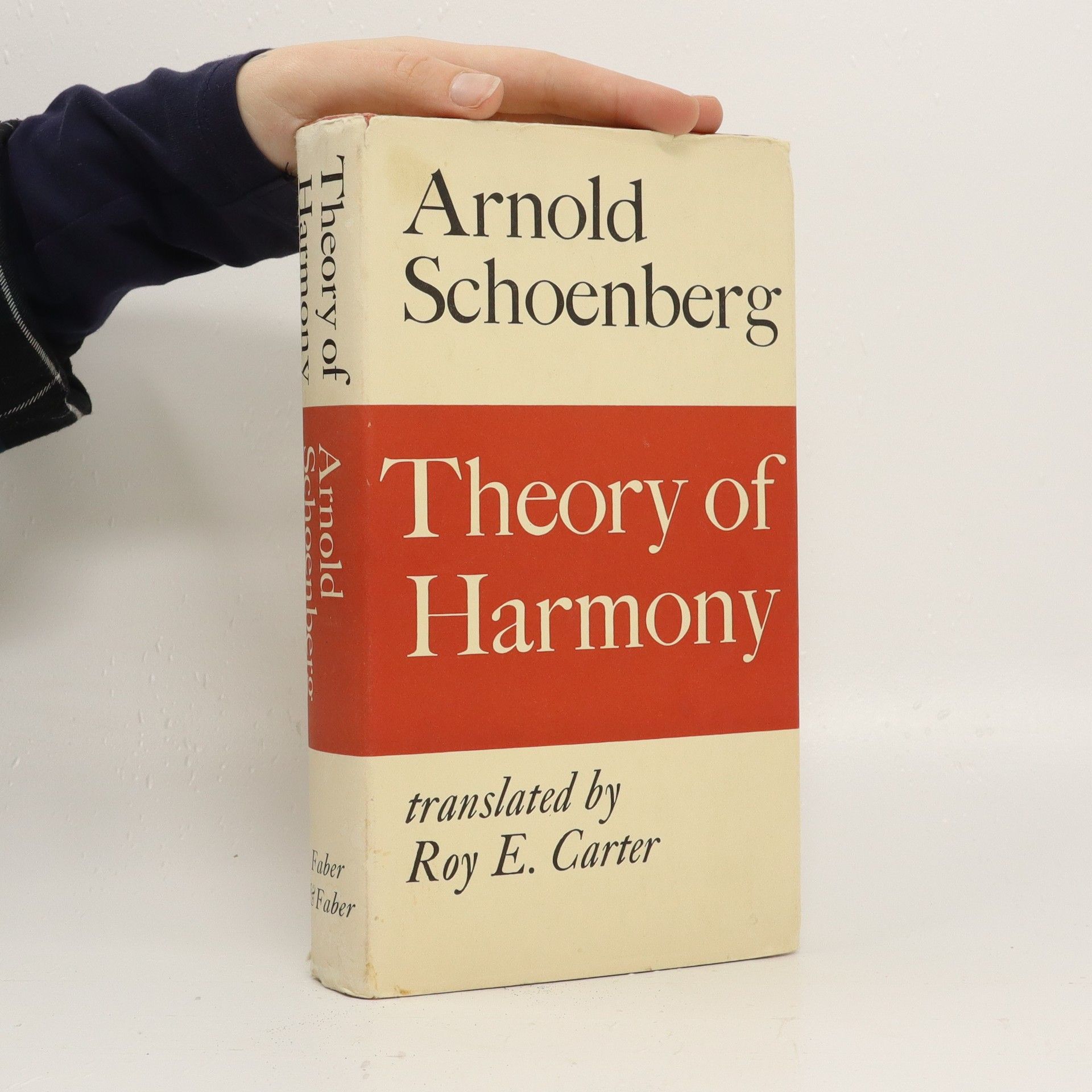Schoenberg's correspondence with Alma Mahler
- 448 pages
- 16 hours of reading
Schoenberg's Correspondence with Alma Mahler documents a modern music friendship spanning a half century (1903-1951) and two continents.
Arnold Schoenberg was a pioneering composer associated with German Expressionism and the leader of the Second Viennese School. His innovative approach to harmony and musical development marked a significant turning point in 20th-century music, influencing generations of composers. He is renowned for developing the twelve-tone technique and the concept of developing variation, fundamentally altering compositional methods. Beyond his musical achievements, Schoenberg was also a painter, a crucial music theorist, and an influential teacher whose analytical approach and aesthetic views continue to resonate in contemporary musical thought.







Schoenberg's Correspondence with Alma Mahler documents a modern music friendship spanning a half century (1903-1951) and two continents.
Early in his career, the composer Arnold Schoenberg maintained correspondence with many notable figures: Gustav Mahler, Heinrich Schenker, Guido Adler, Arnold Rosé, Richard Strauss, Alexander Zemlinsky, and Anton von Webern, to name a few. In this volume of Oxford's Schoenberg in Words series, Ethan Haimo and Sabine Feisst present English translations of the entirety of Arnold Schoenberg's early correspondence, from the earliest extant letters in 1891 to those written in the aftermath of the controversial premieres of his String Quartet No. 1, Op. 7, and the Kammersymphonie, Op. 9. The letters provide a wealth of information on many of the crucial stages in Schoenberg's early career, offering invaluable insights into his daily life and working habits. New details emerge about his activities at Wolzogen's Buntes Theater in Berlin, his frequently confrontational interactions with his first publisher (Dreililien Verlag), the reactions of friends and critics to the premieres of his works, his role in the founding of the Vereinigung schaffender Tonkünstler, his activities as a teacher, and his (all too often unsuccessful) attempts to convince musicians to perform his music. Presented alongside the editors' extensive running commentary, the more than 300 letters in this volume create a vivid picture of the young Schoenberg and his times.
Briefwechsel Arnold Schönberg - Thomas Mann 1930-1951
Mit dem Briefwechsel von Arnold Schönberg und Thomas Mann ist nicht nur ein Stück Exilgeschichte, sondern ein wesentliches Stück Literatur- und Musikgeschichte erstmals auf Deutsch nachzulesen. Die Briefe sind ein weiterer Baustein zum umfassenden Verständnis der Werke der beiden Ausnahmekünstler. Als der Literaturnobelpreisträger Thomas Mann 1941 zum ersten Mal nach Los Angeles kam, lebte er nur wenige Häuser entfernt vom Komponisten Arnold Schönberg. Trotz der räumlichen Nähe und eines gelegentlichen Kontaktes entwickelte sich keine enge Freundschaft zwischen den beiden. Der zunächst unregelmäßige, später intensivere Briefverkehr zeigt vielmehr inhaltliche und persönliche Bruchlinien auf, die tief in den Biografien der beiden Künstler verwurzelt scheinen. Vor allem die offensichtlichen Anlehnungen von Adrian Leverkühns – Protagonist in Manns Roman „Doktor Faustus“ – musiktheoretischen Überlegungen an Arnold Schönberg boten Anlass zu heftigen Auseinandersetzungen. Ergänzt wird der Briefverkehr durch Schönbergs Vier-Punkte-Programm für das Judentum und begleitende Essays des namhaften Musikhistorikers Bernhold Schmid, des Philosophen Andre Neher und des Schönberg-Schülers Richard Hoffmann.
Über ein Vierteljahrhundert lang haben Arnold Schönberg und sein Schüler Alban Berg korrespondiert. Respektvoll, zuweilen devot der eine, unverstellt, nicht selten fordernd und unbequem der andere. Ihr Verhältnis durchläuft über die Jahre eine dramatische Entwicklung. Neben Einblicken in den innersten Kreis der Wiener Schule bietet der Briefwechsel ein musik- und zeitgeschichtliches Panorama: Vom Wiener Fin de siècle bis zu Schönbergs amerikanischem Exil, von den heroischen Anfängen der Neuen Musik bis zu Modellen der Zwölftonkomposition und groß angelegten, gegensätzlichen Opernprojekten. Thomas Ertelt, geboren 1955, Dissertation über Alban Bergs Oper „Lulu“, Veröffentlichungen zur Wiener Schule und zur Geschichte der Musiktheorie, seit 2002 Direktor des Staatlichen Instituts für Musikforschung, Berlin. Er ist Herausgeber der Gesamtedition.
Mit einem Nachwort von Nuria Schoenberg Nono herausgegeben und mit einer Einführung in Leben und Werk des Komponisten versehen von Matthias Henke
Was für ein Schlamassel! Die Prinzessin hat Tennis gespielt und liegt jetzt mit lauter blauen Flecken im Bett. Der trottelige Diener Wolf ist ihr keine Hilfe. Es dauert ewig, bis er eine Wärmflasche findet, was eine Apotheke ist, muss man ihm erst erklären, und zu guter Letzt vergisst er, wo die Prinzessin blaue Flecken hatte... Der Komponist Arnold Schönberg hat seinen Kindern besonders gern Geschichten von einer nörgeligen Prinzessin und ihrem vertrottelten Diener Wolf erzählt. Eine davon ist als Tonaufnahme erhalten und erscheint hier zum ersten Mal - mit herrlich komischen Bildern von Peter Schössow.
Die Publikation zeigt eine Auswahl von Arnold Schönbergs bildnerischen Werken.
Arnold Schönberg (1874–1951) byl jednou z nejvýznamnějších osobností první poloviny 20. století. Nebyl jen světoznámým hudebním skladatelem, ale i brilantním teoretikem, esejistou a zajímavým malířem. Jádrem knihy je soubor studií a přednášek, které uspořádal sám autor do sborníku Style and Idea, klíčového pramenu k porozumění moderní hudbě. Autor zásadní úvodní studie, editor i překladatel této knihy prof. PhDr. Ivan Vojtěch je mezinárodně uznávaným odborníkem na celý široký okruh schönbergovské problematiky, v rámci výzkumu zpracoval celou jeho rukopisnou pozůstalost, byl i editorem německých a italských vydání. Kniha obsahuje úplnou edici Schönbergových textů, včetně dosud knižně nepublikovaných, zabývajících se architekturou, židovstvím, malířstvím a dalšími tématy. V barevné příloze poprvé v Čechách představujeme Schönbergovo poměrně rozsáhlé malířské dílo doplněné studií Otto M. Urbana. Počet ilustrací a příloh: 231